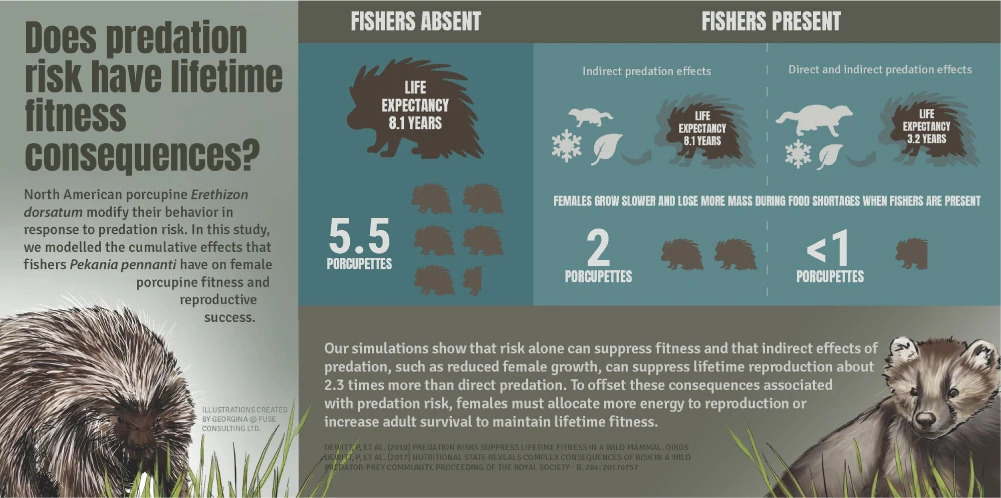Table of Contents
Scientific research and publishing have been evolving rapidly. As the sheer volume of published papers continues to grow exponentially, graphical abstracts have emerged as one of the most important aspects of communicating research effectively and improving the visibility and accessibility of findings. Academic journals are increasingly requesting the submission of graphical abstracts along with text-based abstracts. This stems from the wide-ranging benefits offered by graphical abstracts.
What is a graphical abstract?
A graphical abstract is a visual representation of a study’s key findings. It distils complex information into easily understandable, visually appealing formats that enhance comprehension and retention.
Graphical abstracts can take the form of graphs, illustrations, diagrams, images, or photographs. They are typically a single image that combines text, symbols, and visual elements to convey the key highlights of the study clearly and accurately.
An effective graphical abstract captures readers’ attention and directs them to the key aspects of the study without forcing them to read the entire paper. Usually presented at the beginning of a research paper, graphical abstracts provide an effective alternative to text—one that can engage both specialists and non-specialists alike.
Features of a good quality graphical abstract
Graphical abstracts are essential for conveying research essence effectively with minimal text and maximum visuals. Here are the basic features of a good-quality graphic abstract:
- A simple and clear presentation is crucial for a broad audience’s understanding
- Avoid overly bright colors, fancy fonts, and distracting design elements
- Use relevant images that communicate the central message clearly
- Adhere to technical specifications for proper layout, format, and high resolution
How do you make a graphical abstract for your research paper?
The following key steps will guide you in preparing a powerful graphical abstract.
- Conceptualize: Identify key findings or aspects of the study. As a researcher, you may be tempted to include all the main results and conclusions. This, however, will make it unwieldy. Make sure to focus only on core findings that can effectively communicate the critical points of your study.
- Outline: Once the key messages have been identified, prepare a rough outline or sketch of the graphical abstract. Plan the layout, including the placement of the images or illustrations and the textual elements. Ensure that the arrangement of the images and text is orderly so that the narrative is clear. Avoid using too many elements or excessive text, as it can confuse readers.
- Design: Use images and visuals appropriate for the message being communicated. The color scheme and fonts selected should also be easy on the eyes.
Example of a graphical abstract

Source: Graphical Abstract Examples — Sage Research Methods Community (sagepub.com)
Five things to consider for an effective graphical abstract
- Know your audience: While designing graphical abstracts, keep in mind the nature of your audience. Would it be a specialized audience with knowledge about the subject or a general one?
- Focus on the key messages: Communicate two or three key findings or results. Avoid presenting too much information, as it can look cluttered and be difficult to interpret.
- Use the right tools: It is essential to ensure that the visual elements are relevant to the interest of the readers. To make your graphical abstract impactful and attractive, you can always use tools such as Mind the Graph. With a library of 75,000+ scientific illustrations, 300+ customizable templates, and the availability of multiple formats, Mind the Graph can help researchers and students save time and come up with great graphical abstracts.
- File Format: Once created, remember to save the graphical abstract in a high-resolution format (e.g., TIFF, PNG) to ensure optimal quality for publication and make it easier to share online.
- Seek feedback: This will help you understand whether the key messages are being clearly communicated and whether the visual elements are appealing and interesting.
While creating a graphical abstract is often seen as a challenging task, following the steps outlined in this article will enable you to create impactful visuals that can enhance the impact of your research. Given the speed at which digitalization is moving, the need for graphical abstracts will only continue to grow.
Researchers can use the many online tools available to aid them in their efforts to develop their visual communication skills. Do keep in mind, however, that while using the plethora of online tools can help streamline the design process, it is important to ensure the right mix of AI and human creativity to ensure accuracy and originality.
Paperpal is a comprehensive AI writing toolkit that helps students and researchers achieve 2x the writing in half the time. It leverages 22+ years of STM experience and insights from millions of research articles to provide in-depth academic writing, language editing, and submission readiness support to help you write better, faster.
Get accurate academic translations, rewriting support, grammar checks, vocabulary suggestions, and generative AI assistance that delivers human precision at machine speed. Try for free or upgrade to Paperpal Prime starting at US$19 a month to access premium features, including consistency, plagiarism, and 30+ submission readiness checks to help you succeed.
Experience the future of academic writing – Sign up to Paperpal and start writing for free!



